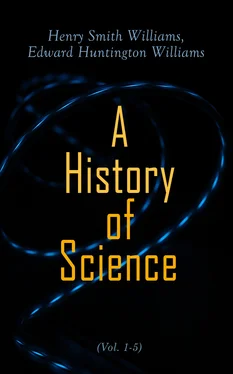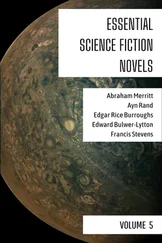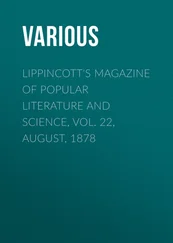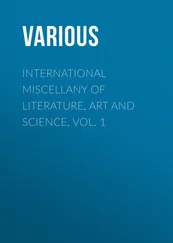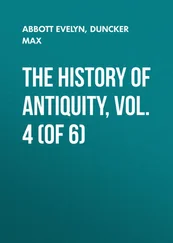What, then, was the line of scientific induction that led Aristarchus to this wonderful goal? Fortunately, we are able to answer that query, at least in part. Aristarchus gained his evidence through some wonderful measurements. First, he measured the disks of the sun and the moon. This, of course, could in itself give him no clew to the distance of these bodies, and therefore no clew as to their relative size; but in attempting to obtain such a clew he hit upon a wonderful yet altogether simple experiment. It occurred to him that when the moon is precisely dichotomized—that is to say, precisely at the half-the line of vision from the earth to the moon must be precisely at right angles with the line of light passing from the sun to the moon. At this moment, then, the imaginary lines joining the sun, the moon, and the earth, make a right angle triangle. But the properties of the right-angle triangle had long been studied and were well under stood. One acute angle of such a triangle determines the figure of the triangle itself. We have already seen that Thales, the very earliest of the Greek philosophers, measured the distance of a ship at sea by the application of this principle. Now Aristarchus sights the sun in place of Thales' ship, and, sighting the moon at the same time, measures the angle and establishes the shape of his right-angle triangle. This does not tell him the distance of the sun, to be sure, for he does not know the length of his base-line—that is to say, of the line between the moon and the earth. But it does establish the relation of that base-line to the other lines of the triangle; in other words, it tells him the distance of the sun in terms of the moon's distance. As Aristarchus strikes the angle, it shows that the sun is eighteen times as distant as the moon. Now, by comparing the apparent size of the sun with the apparent size of the moon—which, as we have seen, Aristarchus has already measured—he is able to tell us that, the sun is "more than 5832 times, and less than 8000" times larger than the moon; though his measurements, taken by themselves, give no clew to the actual bulk of either body. These conclusions, be it understood, are absolutely valid inferences—nay, demonstrations—from the measurements involved, provided only that these measurements have been correct. Unfortunately, the angle of the triangle we have just seen measured is exceedingly difficult to determine with accuracy, while at the same time, as a moment's reflection will show, it is so large an angle that a very slight deviation from the truth will greatly affect the distance at which its line joins the other side of the triangle. Then again, it is virtually impossible to tell the precise moment when the moon is at half, as the line it gives is not so sharp that we can fix it with absolute accuracy. There is, moreover, another element of error due to the refraction of light by the earth's atmosphere. The experiment was probably made when the sun was near the horizon, at which time, as we now know, but as Aristarchus probably did not suspect, the apparent displacement of the sun's position is considerable; and this displacement, it will be observed, is in the direction to lessen the angle in question.
In point of fact, Aristarchus estimated the angle at eighty-seven degrees. Had his instrument been more precise, and had he been able to take account of all the elements of error, he would have found it eighty-seven degrees and fifty-two minutes. The difference of measurement seems slight; but it sufficed to make the computations differ absurdly from the truth. The sun is really not merely eighteen times but more than two hundred times the distance of the moon, as Wendelein discovered on repeating the experiment of Aristarchus about two thousand years later. Yet this discrepancy does not in the least take away from the validity of the method which Aristarchus employed. Moreover, his conclusion, stated in general terms, was perfectly correct: the sun is many times more distant than the moon and vastly larger than that body. Granted, then, that the moon is, as Aristarchus correctly believed, considerably less in size than the earth, the sun must be enormously larger than the earth; and this is the vital inference which, more than any other, must have seemed to Aristarchus to confirm the suspicion that the sun and not the earth is the centre of the planetary system. It seemed to him inherently improbable that an enormously large body like the sun should revolve about a small one such as the earth. And again, it seemed inconceivable that a body so distant as the sun should whirl through space so rapidly as to make the circuit of its orbit in twenty-four hours. But, on the other hand, that a small body like the earth should revolve about the gigantic sun seemed inherently probable. This proposition granted, the rotation of the earth on its axis follows as a necessary consequence in explanation of the seeming motion of the stars. Here, then, was the heliocentric doctrine reduced to a virtual demonstration by Aristarchus of Samos, somewhere about the middle of the third century B.C.
It must be understood that in following out the steps of reasoning by which we suppose Aristarchus to have reached so remarkable a conclusion, we have to some extent guessed at the processes of thought-development; for no line of explication written by the astronomer himself on this particular point has come down to us. There does exist, however, as we have already stated, a very remarkable treatise by Aristarchus on the Size and Distance of the Sun and the Moon, which so clearly suggests the methods of reasoning of the great astronomer, and so explicitly cites the results of his measurements, that we cannot well pass it by without quoting from it at some length. It is certainly one of the most remarkable scientific documents of antiquity. As already noted, the heliocentric doctrine is not expressly stated here. It seems to be tacitly implied throughout, but it is not a necessary consequence of any of the propositions expressly stated. These propositions have to do with certain observations and measurements and what Aristarchus believes to be inevitable deductions from them, and he perhaps did not wish to have these deductions challenged through associating them with a theory which his contemporaries did not accept. In a word, the paper of Aristarchus is a rigidly scientific document unvitiated by association with any theorizings that are not directly germane to its central theme. The treatise opens with certain hypotheses as follows:
"First. The moon receives its light from the sun.
"Second. The earth may be considered as a point and as the centre of the orbit of the moon.
"Third. When the moon appears to us dichotomized it offers to our view a great circle (or actual meridian) of its circumference which divides the illuminated part from the dark part.
"Fourth. When the moon appears dichotomized its distance from the sun is less than a quarter of the circumference (of its orbit) by a thirtieth part of that quarter."
That is to say, in modern terminology, the moon at this time lacks three degrees (one thirtieth of ninety degrees) of being at right angles with the line of the sun as viewed from the earth; or, stated otherwise, the angular distance of the moon from the sun as viewed from the earth is at this time eighty-seven degrees—this being, as we have already observed, the fundamental measurement upon which so much depends. We may fairly suppose that some previous paper of Aristarchus's has detailed the measurement which here is taken for granted, yet which of course could depend solely on observation.
"Fifth. The diameter of the shadow (cast by the earth at the point where the moon's orbit cuts that shadow when the moon is eclipsed) is double the diameter of the moon."
Here again a knowledge of previously established measurements is taken for granted; but, indeed, this is the case throughout the treatise.
Читать дальше
